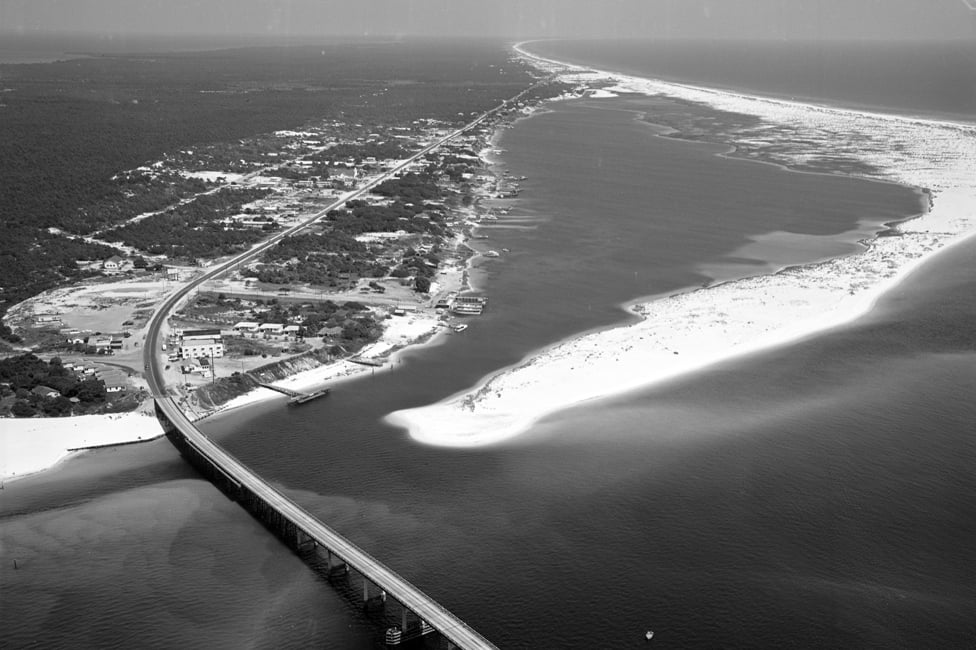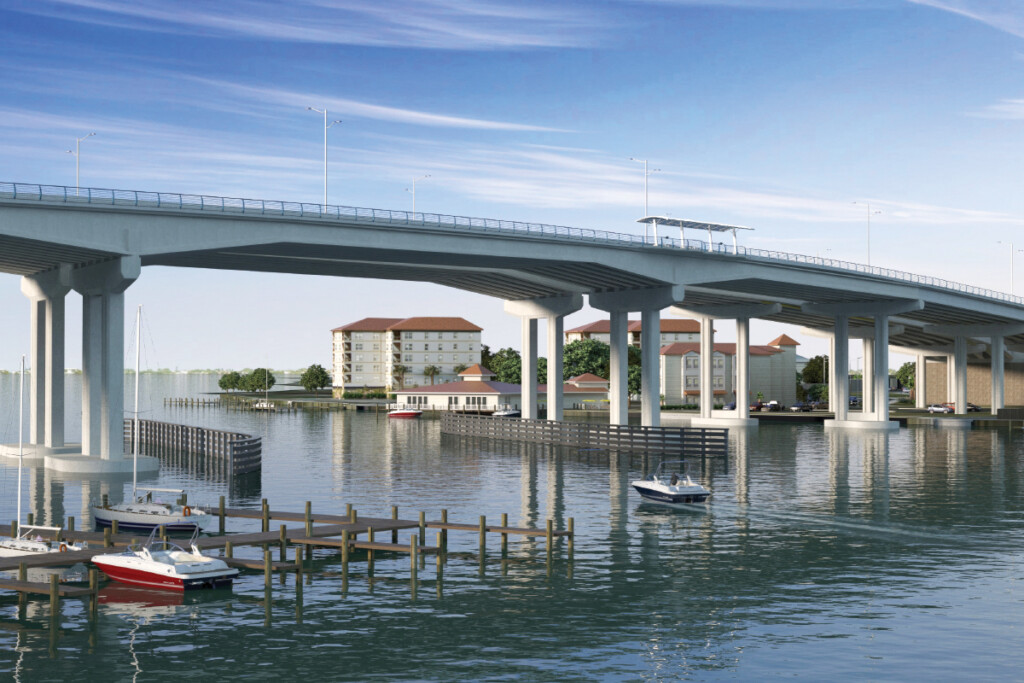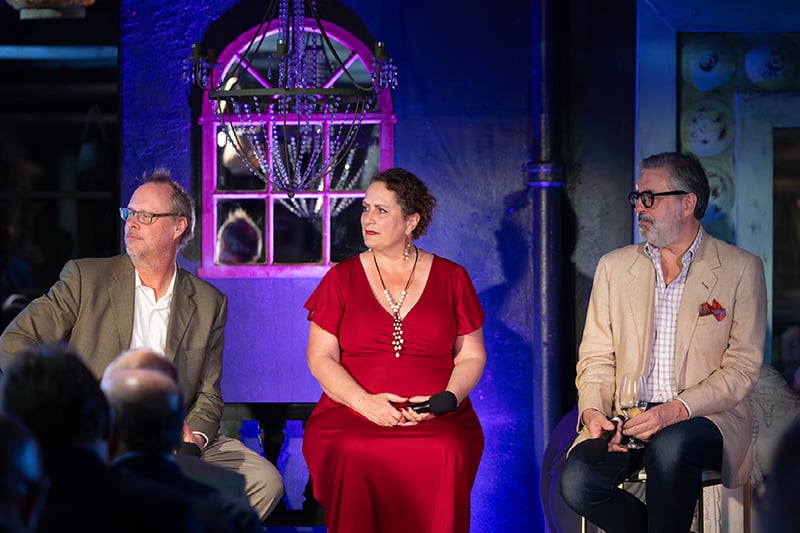Building the Beach
Local developers recall the Emerald Coast’s transformation from sandy expanses to high-rise hotels

Itwas just after developer and cofounder of Sandcastle Resorts and Hotels Frank Flautt had purchased a 10-acre beachfront lot that would house the future Hilton Sandestin Beach Golf Resort & Spa that he placed a call to his friend Ernest Shahid.
Shahid, who developed the first major condominium in Destin in 1971, asked him what was wrong.
“I said, ‘Ernie, I think I made a tremendous mistake … I’m sitting here in Sandestin at night, and I don’t see a single light anywhere,’” Flautt recalls of the conversation. “There was no infrastructure here, and on the beach, there was nothing to speak of.”
In the early ’70s, other developers had purchased the 2,400 acres of land in Miramar Beach that we now know as Sandestin Golf and Beach Resort. By the ’80s they had only begun to establish infrastructure across the vast acreage. In purchasing the plot of land for the future Hilton Sandestin Beach, which is located within Sandestin gates, Flautt had unwittingly bought into a bright future for his hotel resort.
But back then, Sandestin’s beachside was hardly more than sand.
“When I came here in the ’80s, it was so primitive, we would have to buy groceries in Fort Walton Beach,” Flautt says. “There were a couple hamburger places, but no real infrastructure in place, no health care.”
Flautt, who previously operated a company that developed numerous Holiday Inns around Florida, saw potential in the paradise plain.
“It was very difficult to get started because interest rates were about 21 percent, and nothing made financial sense with that kind of debt,” Flautt says. “So, working with Destin developer Peter Bos, we made a plan to the develop the Hilton and sell units as a condominium.”
Hilton Sandestin Beach, which officially opened in 1984, got off to a rocky start. Flautt said things were “thin” for the first five or six years, just barely making enough profit to sustain operations and payroll.
Then, Flautt said the area began to take off. Peter Bos made great strides in Destin. Then, there was Keith Howard across the road in Sandestin, who would ultimately create Grand Boulevard, the Silver Sands Premium Outlets, and several resort residential communities, and who Flautt says “did a fantastic job of putting the whole area on the map.”
“That’s what people want to come here for,” Flautt says. “They want the sun and the sand, but they also want something to do—shopping, eating, recreations. Development has been so positive since I’ve been here, and our customers have been the greatest. There are new ones every year, but many are people who come here to stay each year and have been growing up alongside us and the property.”
As more hotels and condominiums began popping up along the coast, there was one luxury resort destination that would open in 2007 and became one of Destin’s most identifiable landmarks.
Comprised of two 13-story towers nestled within the Destin Harbor, the Emerald Grande at HarborWalk Village had been in the making since Peter Bos visited the area in the 1970s and swore he’d build a hotel.
The proposal was met with some controversy, recalls Greg Featherston, vice president of special projects for Legendary Marina and director of operations for the Emerald Grande.
“I remember hearing one of our past mayors at a city council meeting say, ‘What is that monstrosity that blocks the sun?’” Featherston recalls with a laugh. “I think attitudes have changed; the market has changed. Growth is going to happen no matter what, and the best you can do is to control it within reason.”
Featherston has been working alongside Bos for the past 44 years. Now 78, he has no plans of retiring anytime soon. A local since the mid ’80s, he is proud of the way Bos has developed the area, not only with the Emerald Grande but with infrastructure and attractions such as the Destin Commons, Legendary Marina, and Regatta Bay Golf & Yacht Club.
“The impact of the Emerald Grande and HarborWalk have been significant,” Featherston says. “Next to Eglin and Sacred Heart, we are one of the bigger employers in the area that have provided careers for people who have been with us for many years. And I think the tax implications over the years—not only bed tax paid by what is generated here but real estate taxes paid by all our different owners—is pretty significant.”
Featherston expects an even greater impact soon, as they get ready to begin phase two of the Emerald Grande. The eastward expansion will include a larger parking garage capable of holding about 1,500 vehicles, an additional 350-plus hotel rooms, a new water feature, a large arcade for rainy day entertainment, and a slew of new restaurants.
“The city has been working with us very well,” Featherston says. “I know traffic is a problem, but whatever should have been done about that to prevent it, should have been done a long time ago. You can look at 30A and see they are going through the same issues. If they could only look forward to try to figure something out while there is still vacant land there.”
Featherston says the cost of living in Destin is an issue. Exorbitant rent expenses are pushing workers out to areas including Fort Walton Beach, Crestview, Niceville, and Navarre. Their commutes get them caught up in tourism traffic and contribute to congestion.
“You’ve got places like the apartments north of the Walmart, but they’re asking so much for rent you’ll have four or five workers grouping up in one unit to afford it,” Featherston says. “It would be nice if we had the space for low-income and affordable housing, but that’s just not feasible without government subsidies, and the price of land is so high it would be difficult to turn a profit. It’s very unfortunate.”
Featherston says while beachfront space is now essentially nonexistent, he does foresee the area growing a bit more on the northern side. “It’s just got to be smart and sustainable,” he adds.
Flautt shares the same sentiment. “My hope for this area in the next few years is we don’t get too overdeveloped and unappealing,” he says.
After all, there is a reason the Emerald Coast has been a must-visit vacation destination for generations.
“All of this new development looks fresh and good now, but my theory is we’ve got to continue to put money back into these properties and make it a place people want to come,” Flautt says. “It can’t get dirty or unpleasant to be here.
“We can’t let it lose its charm.” ▪



